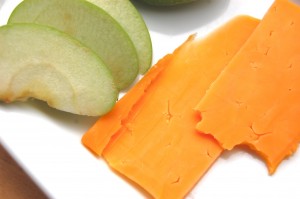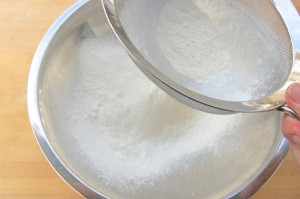Curse You, WordPress!
We’ve got some ongoing login issues with the new site, friends, sorry for any inconveniences. A pesky bug, which I’ve tried spraying RAID on but it just won’t die, is serially locking me out for periods ranging from several minutes to several hours. Which is why I haven’t been getting a lot of posts up or getting back to a lot of you who’ve posted comments. Hope to have this worked out soon. Meantime thanks for your patience. – Joe
READ ONThe Banana as Post Colonial Neo-Imperialistic Metaphor
The primary port of entry for bananas coming into the US from Central and South America in New Orleans. Why? Because New Orleans is at the mouth of the Mississippi River, which is a terrific distribution point if you’re selling bananas to consumers in the American interior. No wonder then that the fabled (and infamous) United Fruit Company was headquartered in New Orleans from 1933 to 1985.
Now, mention the United Fruit Company to anyone with much knowledge of Central American history, and they’ll either a.) engage you in a lively discussion on the socioeconomics of fruit growing in Latin America, or b.) launch into a tirade about American economic imperialism. The United Fruit Company was that sort of outfit. One of the first major economic powers — and it was a power, not just a company — to exploit the agricultural resources of Central America, it polarizes people in the same way Cecil Rhodes polarizes scholars of African history. Either Rhodes was a visionary modernizer who brought infrastructure, jobs and growth to underdeveloped territories, or he was a vainglorious, racist exploiter of virgin lands and peoples. It all depends on how you feel about the relative blessings of modernity, and/or which side of the great Western cultural/political divide you happen to stand on.
READ ONWhence the Banana?
The banana is truly one of the weirdest plants in nature. Not a tree, it’s actually an herb. Which means that every year it sprouts up, fruits, and dies back to its underground rhizome (technically known as a corm). Mind boggling when you consider that banana plants can grow to be over 40 feet tall. To look at one, it appears as some sort of palm tree. That is, until it shoots out a suspiciously phallic-looking flower stem, which in time grows so heavy with fruit — actually berries…actually false berries — that it flops over, bananas pointing upward. It’s this upward growth in defiance of gravity that gives bananas their characteristic curve.
Each flower can have up to 20 clusters of fruit (called “hands” in “the business”) and each cluster can have up to 300 individual fruits (you guessed: “fingers”). Considering that each banana can weigh 8 ounces or so, that’s a whole lot of starchy fruit. On which note, we talked below about how apples convert starch to sugar as they ripen. Bananas do the same thing but at a much more impressive rate. In an unripe banana the ratio of starches to sugars is 25-1, but by the time they fully ripen that ratio has completely flipped, to 1-20, which is why Mrs. Pastry lets hers ripen until they’re practically black. What a sweet tooth that girls has!
READ ONSimple Pleasures 1: Cheddar & Tart Apples
Funny thing on this blog, there are two types of posts that get lots and lots of attention: extremely complex pastries like Opera cake, and extremely simple preparations like vanilla pudding. Lately I’ve thought it might be fun to create a new category of one-off posts covering very simplest of sweet and after-dinner pleasures, so simple in fact that no preparation might be needed at all.
The apple conversation this week got me thinking about this, a classic old-timey combo, one of my late grandfather’s favorite autumn snacks: Cheddar cheese and Granny Smith apples. The sharper the cheese…
READ ONWhich are the best baking apples?
A timely question given the season, and an important one. Pick the right apple for an apple upside-down cake and you get a firm flavorful apples inside a sweet, moist (yet still firm) cake. Pick the wrong one and you get applesauce in a sodden mess.
In general you’re looking for a firm apple that is also sweet. My go-to, because they’re so easy to find in the US, is the Golden delicious. Lately Gala apples have become popular for baking, though I have a hard time understanding why since they lose an awful lot of flavor in the oven. Other decent choices are Jonathans and Jonagolds, Winesaps and Newton Pippins. Best of all, if you can find them, are Red Romes, also known as Rome Beauties, probably the preeminent baking apple.
READ ONHow important is sifting?
Reader Deb asks if it’s necessary to sift the flour for an upside-down cake, or whether a vigorous whisking will suffice. I advise a full sift myself, for cakes especially, but everywhere lightness counts: biscuits, sponges, pancakes, tea breads, the list goes on.
It’s true that some modern bakers consider sifting to be little more than a ritual, and an outdated one at that. I disagree, though I will admit that sifting isn’t nearly as critical for the home baker as it once was.
READ ONSpeaking of tarte Tatin…
Reader Caitlin wants to know why, when she makes tarte Tatin with tart apples like Granny Smiths, they seem to melt away with heat.
That’s a great question, for as much as I love Granny Smith apples (my grandfather loved to eat them with sharp cheddar cheese) I never recommend them for baking. When it comes to exposing apples to heat you want hard, sweet-tasting apples. Tart apples are better for things like apple sauce.
But…why?
It all has to do with the behavior of starch molecules, which are abundant in apples. Starches, as you’ll recall from other posts on the subject, are long molecules — chains of sugars — that plants use for structural purposes.
READ ONWhere does upside-down cake come from?
That’s not easy to say, since upside down tarts and cakes have been made since at least the day of the great Antoine Carême. Indeed Carême published recipes for several glazed gâteaux renversés, as he called them, in his Royal Parisian Pastry Chef cookbook, which is dated to the 1830’s.
So the idea is not very new and indeed probably came to prominence in the 1880’s with the rise of tarte Tatin, the famous upside-down apple tart made from sliced apples, caramel and puff pastry. The dish was “invented” at the Tatin Hotel in Lamotte-Beuvron, but its fame soon spread and was being made everywhere in Paris by the turn of the century.
READ ONNo Fair!
Reader Marianna from Rio de Janeiro writes:
Hang on a second Joe, this is almost identical to a famous Brazilian cake called Bolo de Banana. The small difference is that we add cinnamon, cloves and nutmeg to the topping. Did Mr. Colicchio rip us off here?
As far as I know Marianna, no. But I sure like the idea of adding spices to the topping. I’m going to put that into the recipe. Thanks!
READ ON
